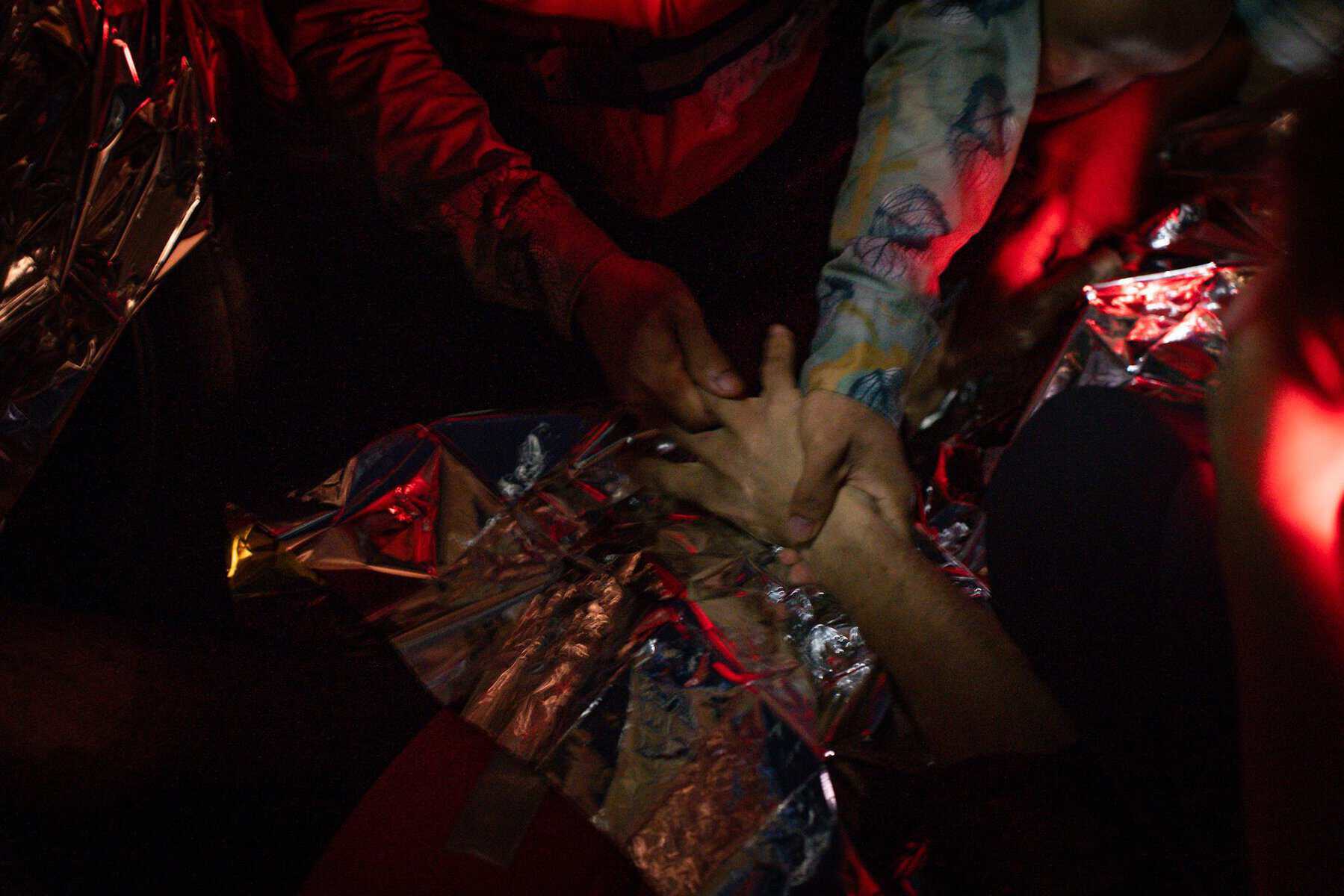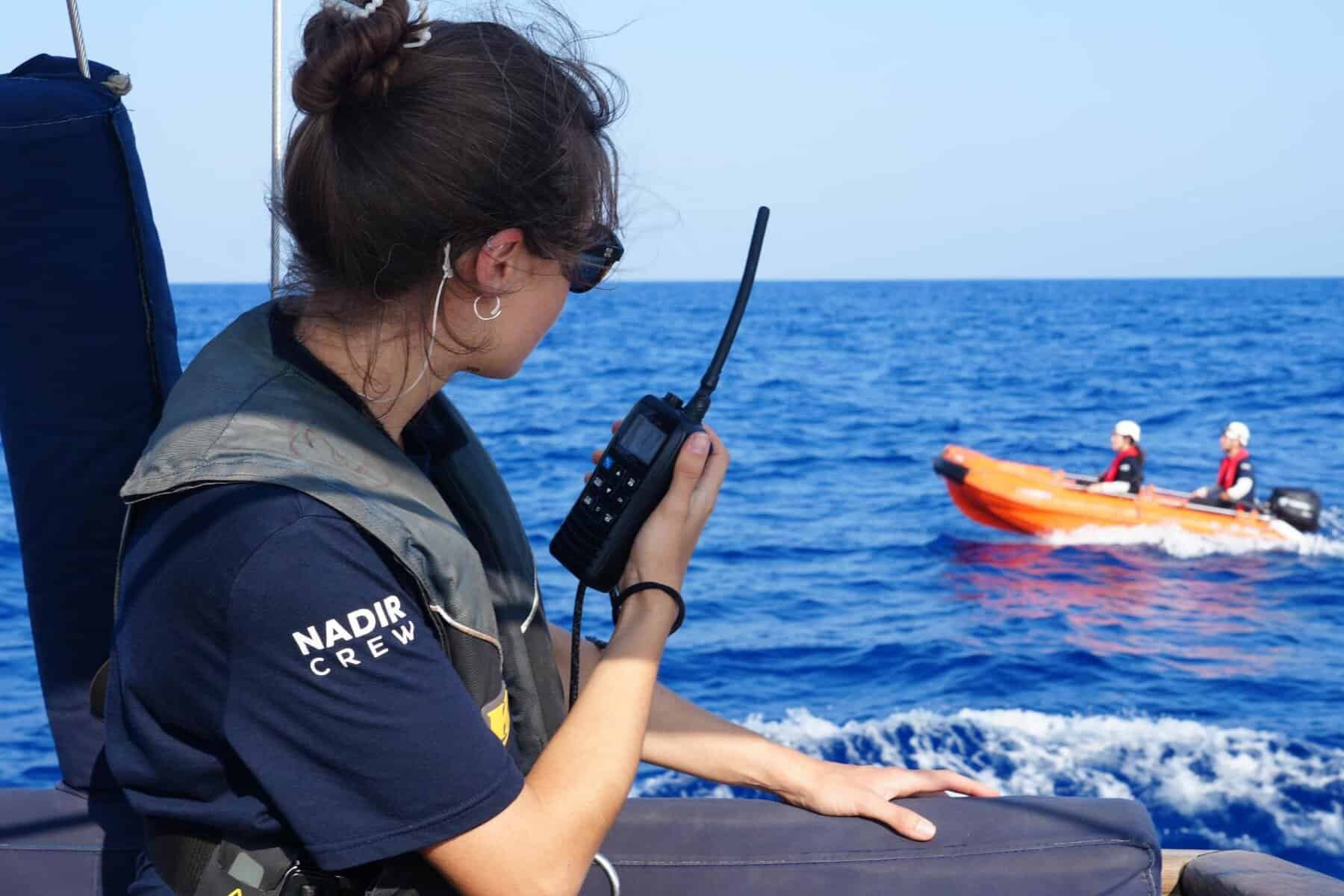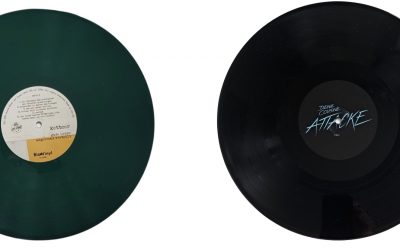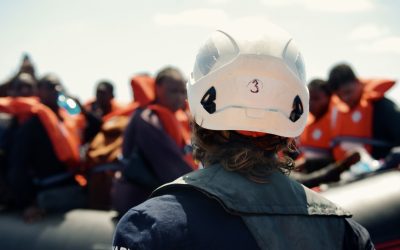Newsletter from October 04, 2025:
Today we would like to use the newsletter to draw attention to those who have provided medical care and treatment to over 950 peoplein the last two years: the team of doctors at NADIR.
But how do you actually experience a mission as a doctor on the NADIR, on board a search and observation vessel? What challenges, but also special moments, does this task entail between swell, exhaustion and responsibility for human lives?

Dr. Rachel Austin, an emergency doctor from London, reports on one of her missions:
Imagine the scene: It’s the middle of the night and the NADIR comes across an overcrowded rubber dinghy, half full of water; people are perilously perched on the deflating floats. The wind is howling, the waves are crashing; some of the people on board speak French, but it’s hard to understand each other in this weather.
The people report that a woman is ill – our powerful searchlights illuminate tired faces on the inflatable boat, but it’s hard to make out who they’re talking about.
This is precisely one of the major challenges as a doctor on board: how can you assess potential patients under such conditions? Is someone seriously ill? And if so, how can we approach them and treat them without capsizing the inflatable boat and endangering even more lives?
The dinghy is in danger of sinking. We have to take everyone on board. Somehow 65 people are crammed into this tiny boat. They have already been at sea for three days, the last one without food or drinking water. At the first triage, we find several dehydrated children and babies, a pregnant woman with abdominal pain. Most of them have suffered severe fuel burns. When gasoline mixes with salt water, it creates a corrosive liquid that attacks the skin and often penetrates into deeper layers. People sit in it for days, so legs, buttocks and genitals are most often affected. The burns are often extensive and deep, often covering more than 15% of the body surface. Women and children are particularly hard hit, as they usually sit inside the boat, where it is supposedly ‘safer’.
The first step in treatment is to wash off the gasoline. My colleague and I have to triage the cases, decide who gets access to the three showers on board first, before we clean the wounds and treat them with special dressings. My attention is required in all directions at the same time – I have to examine and treat the pregnant woman and the dehydrated children, treat burns and at the same time decide whether someone is so seriously ill that we need to request an urgent medical evacuation ashore. The salon where I have to carry out these tasks is packed with an overwhelming crowd of people and resembles an obstacle course of sleeping women, crawling babies and crew members. Despite the open window, it’s as stuffy as a sauna. A gust of wind tears off the bandage I’m working on. This doesn’t happen in my hospital in London. I try to insert a cannula, but the boat hits a wave, I miss and have to apologize. I keep seeing warning signs: could this person be a victim of human trafficking? We have so many people on board with burns that I fear we are running out of bandages. The saloon, the hospital on the NADIR, smells of gasoline and vomit, and I haven’t slept in 24 hours. Have I perhaps overlooked a serious case? We’re still 20 hours from land.
It is difficult to fully describe the experience of being a doctor on the NADIR: Being prepared for any medical eventuality – in such a remote location, under such extreme conditions. At the same time, I am always overwhelmed by the strength and resilience of the people we meet, who have endured such extreme danger and hardship. Bringing these 65 men, women and children safely ashore and providing them with care, medical assistance and dignity is a privilege.
– Rachel Austin
|
|
Especially in these times, we need financial support. Every donation helps us to be able to help people. Is it even possible for you to support us regularly? Become a supporting member and stay close to our association’s work.
Are you curious to find out more about our medical missions?
Press review and podcasts
Here you can find more reports from our doctors and paramedics – to read and listen to:
- Neues Deutschland – Tom Mustroph (Interview with Katinka Sturm): Italy – Obstruction of sea rescue: “The wait is frustrating”. August 14, 2025.
- The Guardian – Ashifa Kassam: Italy’s detention of rescue vessels in Mediterranean will lead to more deaths, say campaigners. July 23, 2025.
- The Civil Fleet Podcast: Ben Cowles (Interview with James Watson and Hannah Weinhardt): Episode 71: Dead children and distant ports. June 26, 2025.
- Tagesspiegel – Hannah Weinhardt: Interjection from a sea rescue doctor: “What the EU’s external borders are doing is madness”. October 24, 2023.
In solidarity and resistance
Rachel and James | Medics RESQSHIP e. V.

|
|



